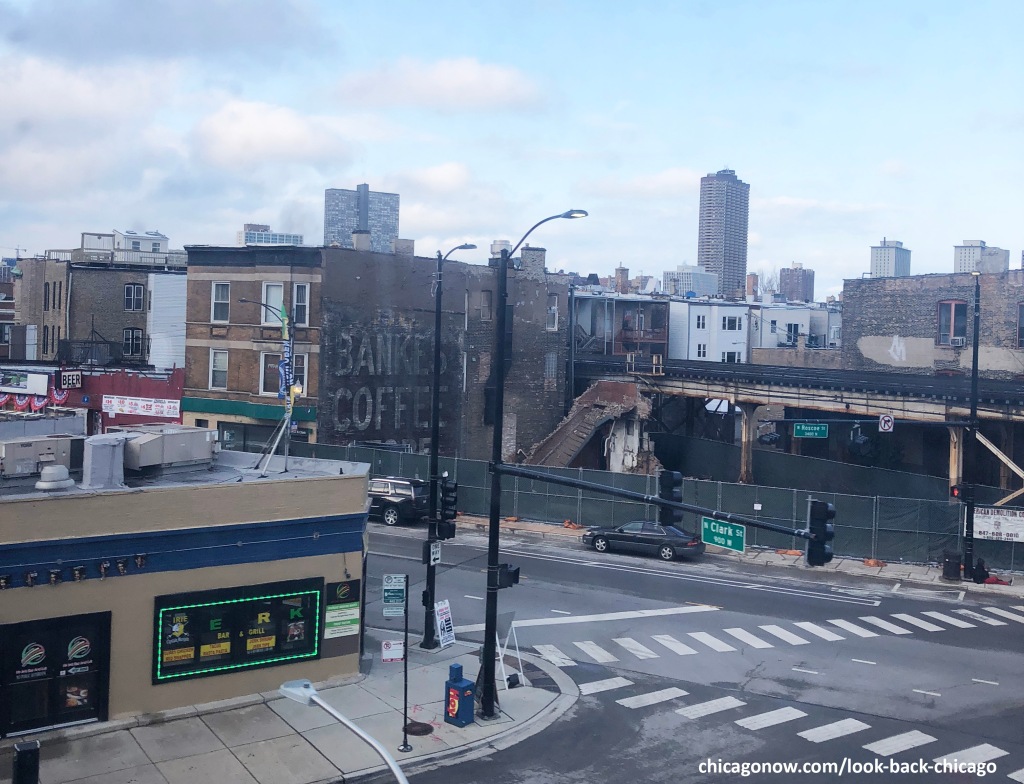When the Chicago Transit Authority announced 14 buildings that would be torn down for their controversial Belmont Flyover project, some lamented the loss of historic buildings in Lakeview.
One present that neighborhood residents got this Spring, however, was the reveal of a ghost sign for “Bankes Coffee Store”, formerly located at 3413 N. Clark Street. Based on its terra cotta art deco motif, the building next door was likely built in the 1920s, which means this sign was covered for nearly a century.
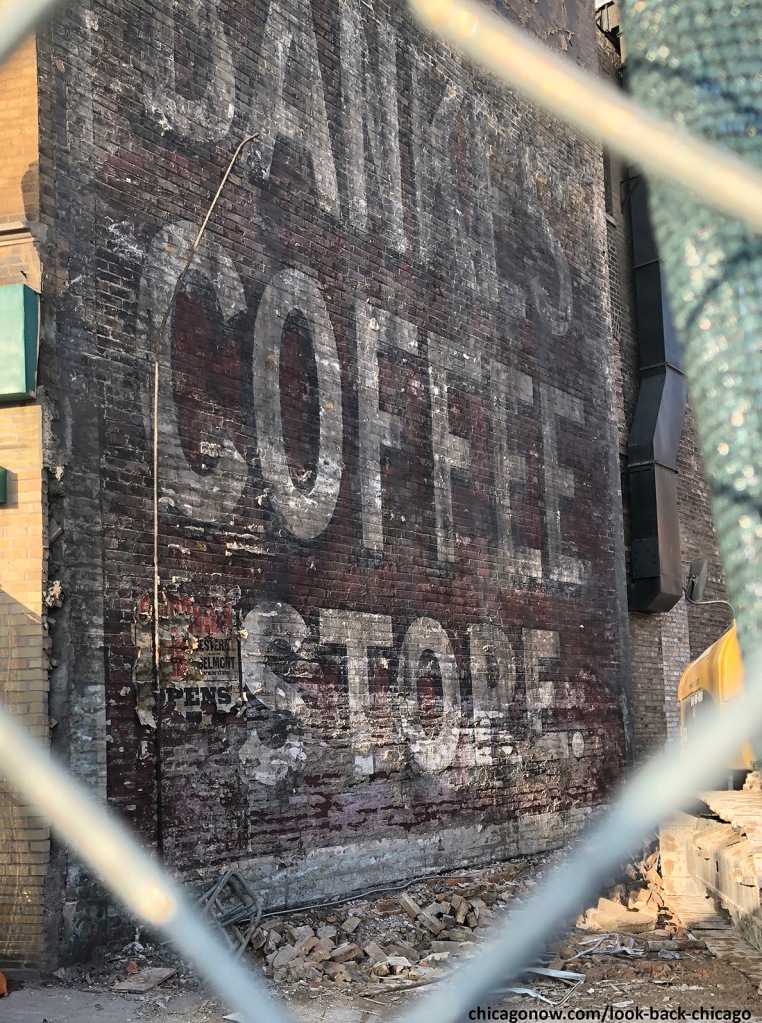
Edward Bankes was born in Northern Ireland in 1859. He began selling coffee not long after he emigrated to the United States in the early 1880s. His first Bankes Coffee Store in Chicago was at 1644 W. Chicago Avenue in West Town and the building is still there today. He had 20 stores by 1916.

In addition to running his coffee business, Bankes purchased and sold real estate throughout much of his life in the United States. Bankes lived at 1036 N. Hoyne Avenue in Ukrainian Village beginning in 1900. The home, which still stands today, was built by architect Henry Worthmann and was put on the market in 2016 for $2.5 million. He commissioned a number of other homes with Worthmann and eventually retired, moving to River Forest in the early 1920s. He continued investing in real estate there and died in 1936 at the age of 76. He is buried at Forest Home Cemetery.
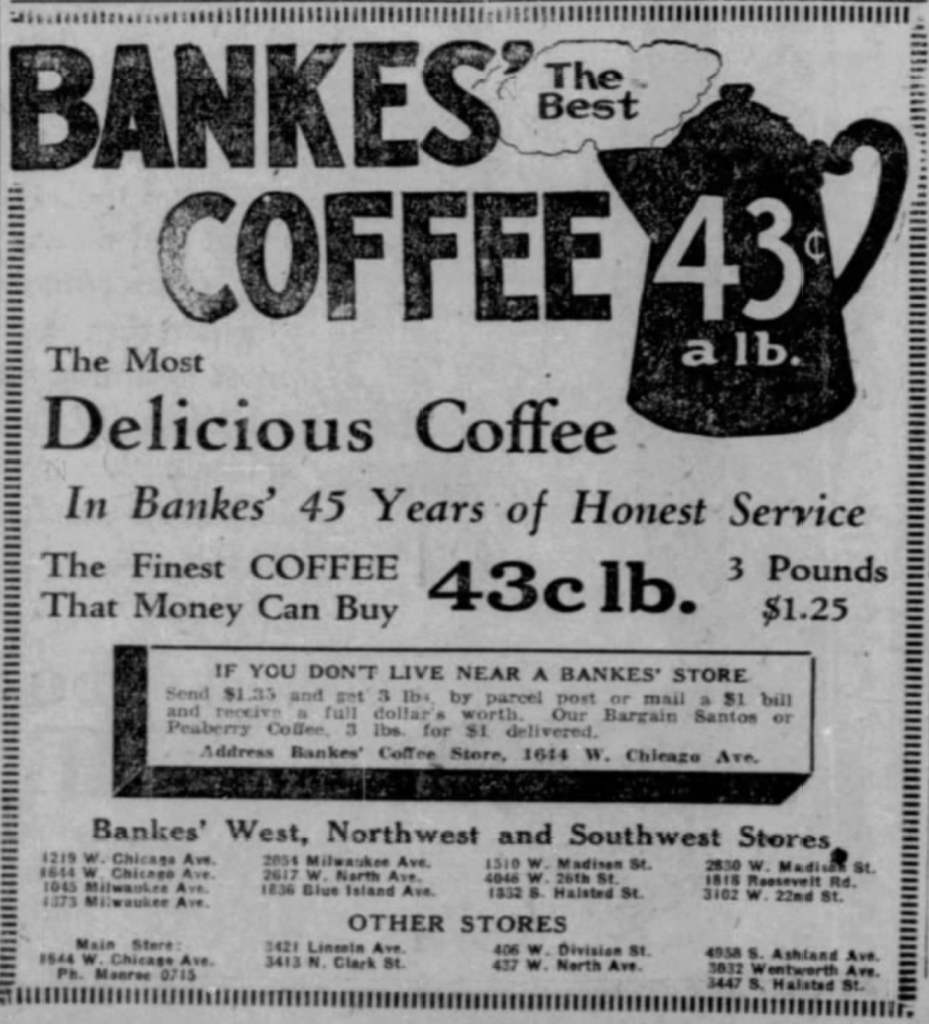
As you can see in this map of all the stores listed in the 1927 ad above, Bankes did a great job of covering much of the city outside of downtown. However, despite being the Starbucks of Chicago in its heyday, there’s not much more information on how long Bankes Coffee Stores (also known as E. Bankes & Co.) lasted. The main Chicago Avenue store is still seen in photographs in 1950, 1955 and a photograph found on eBay that appears to be from the late 1960s.
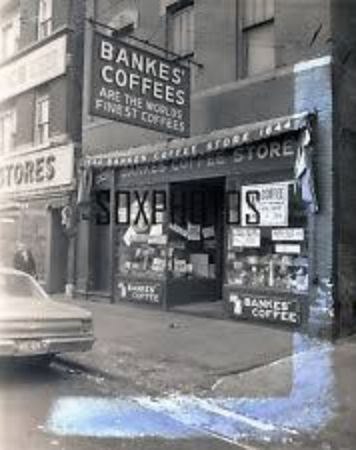
“In the very early 1950’s, I used to go with my mom to the store at 3102 W. 22nd,” recalled former Chicago resident Eileen Priest in a post in the Forgotten Chicago group on Facebook. “The butter was an enormous barrel sized round from which the clerk would cut a chunk. The cut piece was then wrapped in butcher’s paper. There was a good bakery a block or so east of Bankes where we’d buy a loaf of freshly baked pumpernickel bread.”
“Fresh bread and butter with a steaming cup of coffee made for a comforting breakfast,” she mused, “Yep, I drank coffee as a kid.”
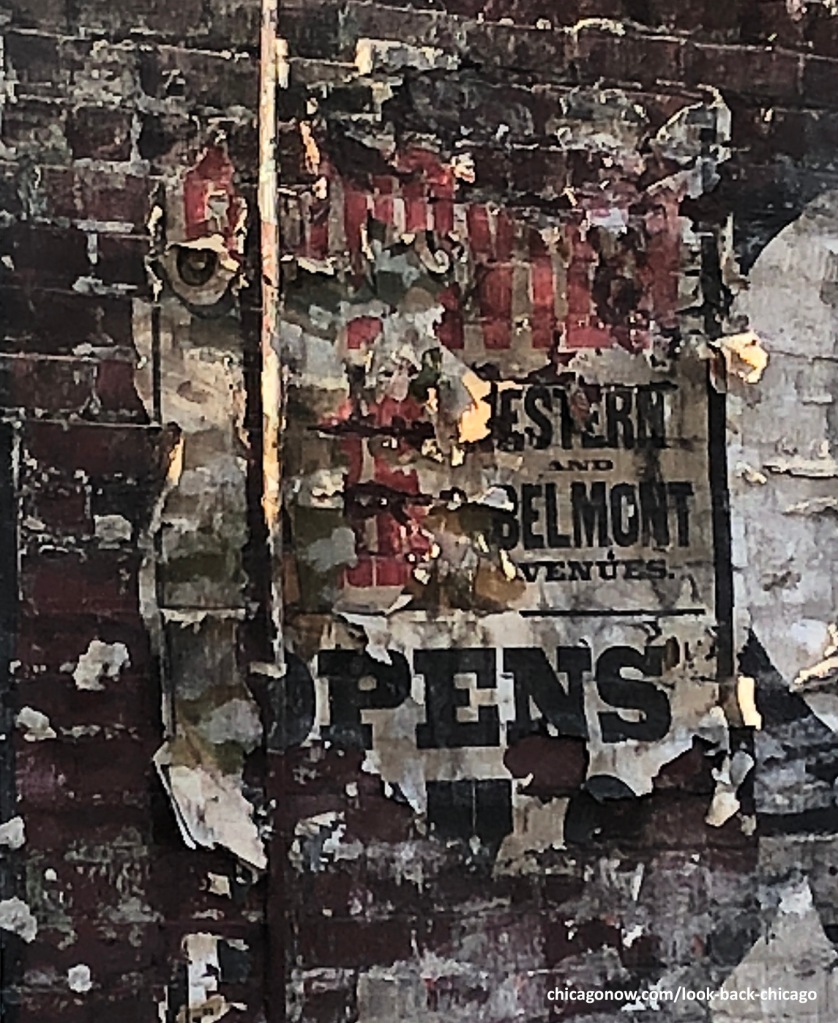
Another treasure revealed with the teardown of 3415-19 N. Clark was the remains of a poster for Riverview, an amusement park well known to long-time residents, which was open from 1904 until 1967. The poster was covered by graffiti artists a few weeks after it was discovered.
Unfortunately for 3413 N. Clark (which was built in 1894), its days are numbered and the building – along with the sign – is scheduled to be demolished not long after Cubs season is over this year.
